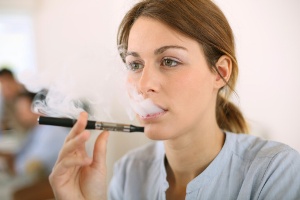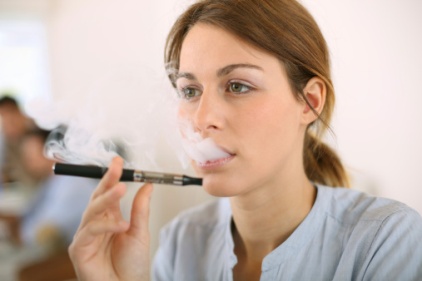 Compiled from various news sources:
Compiled from various news sources:
The controversy over the potential health benefits – of e-cigarettes has ramped up to a new level with the publication of a study in the New England Journal of Medicine showing that people who use the devices on a high-voltage setting could be inhaling large amounts of formaldehyde.
A known human carcinogen that is also found in the smoke of conventional cigarettes, formaldehyde has also been linked to some cancers in humans. Breathing formaldehyde through occupational exposure in funeral homes, etc. has been associated with throat and nasal cancers and leukemias. Formaldehyde is only one of more than 8,000 chemicals in tobacco smoke.
Helpful or harmful?
The growing popularity of e-cigarettes is partly based on claims that their use can help smokers quit smoking conventional cigarettes, or at least, serve as a substitute for cigarettes – thought to be the more harmful tobacco product.
However, according to the study, e-cigarette users could be exposed to up to 15 times the amount of formaldehyde than cigarette smokers – if they use the devices on the high-voltage setting.
The researchers used a “tank system” to measure the formaldehyde-releasing agents that were activated at various voltages. They determined that that vaping 3 milligrams of e-cigarette liquid at a high voltage can generate 14 milligrams of formaldehyde. A tobacco smoker would be exposed to an estimated .15 milligrams of formaldehyde per cigarette or 3 milligrams in a 20-pack.
The 'dry puff phenomenon'
Some anti-smoking advocates are criticizing protocols used in the study. “By setting their machine to repeatedly take three-to-four second puffs at 5.0 volts, the researchers overheated the vaporizer,” said Bill Godshall, anti-smoking activist and Executive Director of Smokefree Pennsylvania. “Vapers call this the ‘dry puff phenomenon,’ and don’t do it due to the very harsh and awful taste.By making a false assumption and by multiplying that false assumption over and over, the researchers got it all wrong. There is no scientific evidence that e-cigs increase risks for cancer or any other disease.”
Gregory Conley, President of the American Vaping Association, said the study used unrealistic device settings that do not mimic actual human behavior.
“When the vapor device in the study was used at the realistic setting of 3.3 volts, formaldehyde was not detected. When the researchers increased the voltage to 5.0 volts and continued to have their machine take puffs for three-to-four seconds, this caused extreme overheating and the production of formaldehyde. This is known in vapor product science as the ‘dry puff phenomenon.’ Contrary to the authors’ mistaken belief, these are not settings that real life vapers actually use, as the resulting dry puffs are very unpleasant. In the real world, vapers avoid dry puffs by lowering the length of their puff as they increase voltage.”
Unregulated
E-cigarettes are currently unregulated by the U.S. Food and Drug Administration (FDA). The agency has proposed bringing e-cigarettes under the same regulations as tobacco – a move cheered by the American Cancer Society and other health groups.
The study’s authors stressed that it is too early to be able to assess the ultimate health risks of e-cigarettes and that such hazards, if they exist, will become evident 10 or 15 years from now in chronic users.

